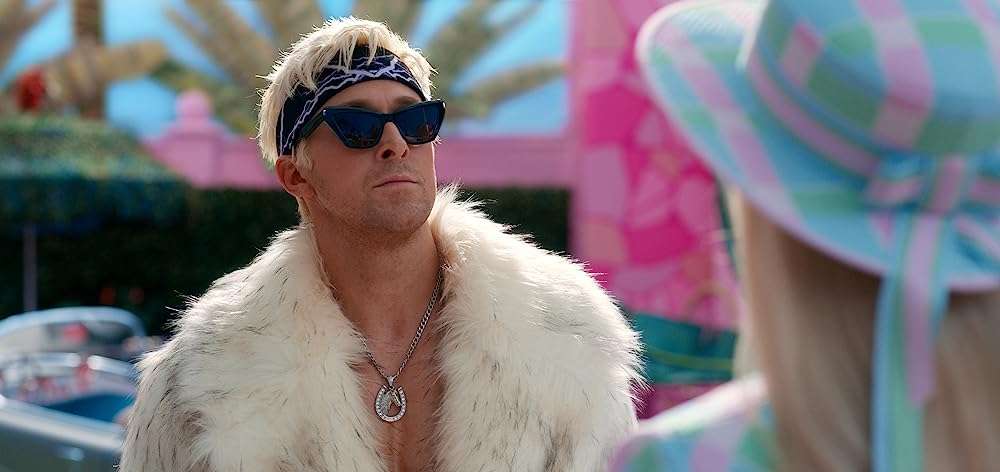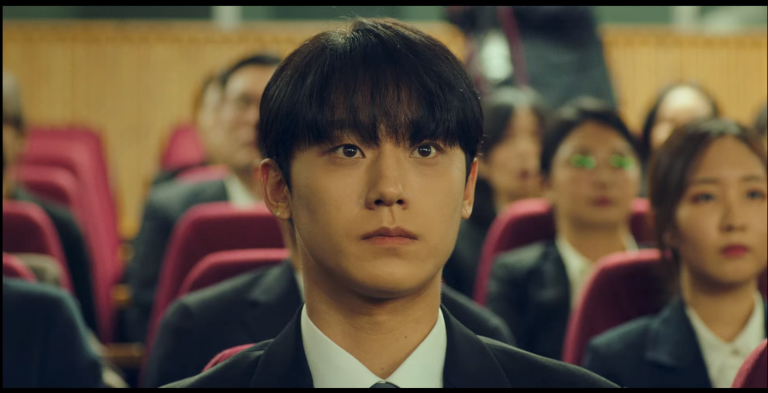Greta Gerwig’s new film “Barbie” (2023), which she co-wrote with her husband Noah Baumbach, has surpassed all expectations, especially considering it was released alongside Christopher Nolan’s “Oppenheimer.” Gerwig’s trajectory as a director is well-established, as she consistently challenges traditional norms, advocates for diversity, and portrays women authentically in her films. Her previous works, such as “Frances Ha” (which she co-wrote) and “Little Women,” exemplify her dedication to exploring complex characters and human experiences, offering fresh perspectives on the screen and contributing to the progress of female representation in the film industry.
In “Barbie,” starring the brilliant Margot Robbie (who has emerged as a powerhouse in the industry), Gerwig fearlessly ventures into bold and eccentric territory. While the film is glossy and visually captivating, it strongly emphasizes delving deep into the understanding of women’s experiences, exploring their emotions, struggles, and ambitions. Gerwig challenges traditional gender norms and goes beyond the stereotypical representation of a woman, moving past the blonde Barbie archetype.
“Barbie” is an important exploration of a woman’s identity in a predominantly male-dominated world. The film follows her journey of self-discovery, unraveling the complexities of her relationships and finding her true voice in the real world. With this film, Gerwig continues to highlight the substance and depth of her characters, showcasing the multifaceted experiences and challenges that women face in their pursuit of self-empowerment and authenticity.
Ryan Gosling’s portrayal of Ken is nothing short of exceptional. He brings his trademark charm and a remarkable sense of humor, reminiscent of his performance in “The Nice Guys,” to the character. However, Gosling goes beyond the superficial, making Ken a multi-layered and complex figure. As Ken ventures into the real world and returns to the notion of ruling Barbieland with patriarchy, Gerwig’s vision for the character becomes evident. Ken is not merely a typical male figure; he becomes a reflection of the struggles and uncertainties that men may encounter when expected to conform to societal stereotypes.
In this article, I delve into the plot of the film and provide a comprehensive summary of “Barbie (2023).” I have also detailed the ending of the film, addressing all the possible questions that may bother the viewer during the climactic moments.
*Spoiler Alert*
Barbie (2023) Plot Summary & Movie Synopsis:
The opening sequence of the film pays homage to Kubrick’s 2001: A Space Odyssey (1968) with a story narrated by Helen Mirren about how, since the beginning of time, young girls have always been handed infant baby dolls to play with. The idea of being caregivers, like their mothers, is already seeded in their undeveloped brains.
However, the girls have become bored with the idea of playing with baby dolls until they are introduced to a beautiful, angelic-like Barbie doll that has perfect hair, smile, and body. The idea of this young and enigmatic doll, which could be more than just a mother to a child, helps young girls see the possibility of their dreams and imagination through the accessibility of these perfect Barbie dolls. As a result, the girls break and throw away their old baby dolls.
The following sequence shows us a brief introduction to these Barbie dolls, which can be anything and everything, eventually changing the lives of young girls and potentially solving all the problems of feminism in the real world.
We are then introduced to the world of Barbieland, where our protagonist, Stereotypical Barbie (Margot Robbie), lives a perfect life where every day is the best day. Each day, she wakes up and feels empowered to see Barbies simply rocking the world with their hard work and talent, and there is nothing that can stop them from achieving their shining dreams.
Barbieland also has Kens (and one Alan), who are pleasing companions to the unstoppable Barbies. One such Ken is Beach Ken (whose day is made when Stereotypical Barbie looks at him). He, in order to impress Barbie by surfing in the water, gets hit by the sea waves and falls flat on his back. When Barbie takes Ken to Doctor Barbie, he learns about the party Barbie is throwing at her home.
Why is Barbie thinking of dying?
Back at Barbie’s shiny disco night party, everyone joins together for a dance, where Barbie casually asks if anyone has ever thought about dying. The sudden stillness makes Barbie wonder about the question, diverting the conversation back to enjoying the night.
Later, after the party, Ken, who is clearly smitten by Barbie; leans in for a kiss. However, with a smile on her face, she asks him to leave. Ken suggests staying at her place because they are girlfriend and boyfriend, but Barbie tells him that it is her dream house, not Ken’s, and it is Barbie’s night with the girls, so he has to go.
What does weird Barbie suggest her to do in order to fix flat feet?
As Barbie bids goodnight to the other Barbies and shares that she is no longer thinking about death, it becomes evident that she is still contemplating it. Even in the idyllic, perfect world, existentialism hits her, which starts to make sense when she notices strange things around her. Traumatized by suddenly having flat feet, the other Barbies suggest she visits ‘weird’ Barbie (who was once very beautiful until someone played with her too hard) for help.
Upon meeting weird Barbie, she shares that she has been experiencing thoughts of death. Weird Barbie explains that the little girl with whom she is connected in the outside world must be experiencing sadness, and it is directly getting projected onto her, resulting in her malfunctioning. The appearance of cellulite on Barbie’s body is an indication that she is becoming human, and before things get too complicated, she must go to the real world in order to fix everything.
Referencing the Matrix trilogy’s red pill and blue pill, weird Barbie offers to let her choose between life back in the perfect world or one that would help her understand the girl outside in the real world. After carefully thinking about the choices, Barbie chooses to find the girl in order to fix her sadness because that is what Barbies do – they make everything perfect.
What happens when Barbie and Ken enter the real world?
After realizing that she is not alone in her journey to the outside world, both Barbie and Ken, along with their roller skates, enter the real world, which is completely opposite from the feminist utopia that Barbieland is.
After getting arrested for breaking the laws of the real world multiple times, an FBI agent alerts a junior officer, Aaron, at the Mattel head office about Barbie and Ken’s presence in the real world. On his way to intimate this critical information, Aaron meets Gloria right outside the office of Mattel’s Board of Directors and has a brief conversation about her Barbie drawings. The drawings include all the Barbie moments we have witnessed until now.
What does Barbie realize on meeting the old woman on the bench?
While Ken is completely enamored by the fact that men run things in the real world, he goes ahead and explores different places where he could learn more about patriarchy. The idea of men controlling the world is a kind of revelation in itself for Ken.
On the other hand, even though Barbie finds it strange how men look and act differently around her, she has an epiphany when she encounters an elderly woman sitting on a bench.
When she compliments the woman about how beautiful she looks, the self-affirmation by the woman makes her realize that every woman is beautiful in all shapes and sizes, with or without a perfect body.
What does Sasha tell Barbie about the real world?
Sharing a heartwarming moment with the woman, Barbie looks within herself in order to find the little girl. We see a montage of a young girl with her mother playing with Barbie, and as the girl grows up, she becomes distant. Barbie learns where she can find the little girl and visits a school nearby.
Upon meeting 14-year-old Sasha and her friends, she realizes that these girls do not like anything that Barbie dolls represent. Barbie tries to convince them that the dolls have fixed everything in the real world with their presence; however, Sasha bursts her bubble, telling her that the dolls haven’t solved women’s problems in the real world and have only made them feel backward by offering a faux idea of beauty as the staple. Hearing this, Barbie feels heartbroken, and on her way out, she runs into the Mattel security personnel who have come to take her back to where she belongs.
What happens when Barbie meets Mattel’s Board of Directors?
Upon arriving at Mattel’s office, Barbie is appalled to learn that there is no woman running the show in the company. When she realizes that Mattel CEO (Will Ferrell) and the rest of the board members have other agendas concerning her, she makes an intense run from the place and gets rescued by Gloria and her daughter Sasha. In the car, Barbie has a realization that Gloria was the sad girl all along, and her own sad and existential thoughts are directly getting projected onto Barbie.
Gloria explains that she had been feeling existential because her daughter was distant from her, and her job gave her no happiness. She often let her intrusive thoughts control everything, and when she started playing with Sasha’s old Barbies, it eventually created a whole lot of chaos around her.
What changes do they see on their return to Barbieland?
Seeing how things have become chaotic because of Gloria’s existential crisis, Barbie decides to take Gloria and Sasha to her Barbieland in order to solve the problem.
However, upon reaching Barbieland, she witnesses that Ken has introduced patriarchy into their world. All the strong, independent Barbies have now become sidekicks, serving as entertainment for all the Kens in Barbieland.
Meanwhile, the Mattel board members also follow Barbie to Barbieland to avoid her getting lost in the real world. But upon arriving, they realize the mess in Barbieland will ensure them more profit from increased sales of Ken dolls.
The sudden shift in the world gives Barbie an extreme existential crisis, where she no longer feels strong or pretty. When Gloria and Sasha realize that Barbieland is no different from their world, they decide to leave. However, Sasha feels they must fight for Barbie, as it has made her mother feel unique and special about herself for the first time in her life.
At Weird Barbie’s house, seeing Stereotypical Barbie literally giving up on her life, Gloria delivers a typical ‘Greta Gerwig‘ monologue about how women are always held back because of patriarchy. She explains that women constantly deal with emotional, mental, physical, and psychological breakdowns in order to prove that they are worth anything.

Barbie (2023) Movie Ending Explained:
What plan does the Barbies devise to smash the patriarchy?
After a 2-minute ‘you go, girl’ feminist speech, Gloria, weird Barbie, and the non-brainwashed Barbies devise a plan to remove patriarchy from Barbieland. The course of action involves rewiring all the Barbies who have been brainwashed by Beach Ken and his notion of patriarchy.
Since all the Barbie houses have been turned into Ken’s Mojo Dojo Casa House, and all the Kens are behaving like their real-world counterparts, aiming to vote for a changed constitution, the Barbies intend to play games with their egos and turn them against each other.
Their objective is to create distraction and feuds among all the Kens. The Barbies also carefully work on pretending to give Kens what they want while discreetly advancing their mission of restoring Barbieland to its original state.
Are Barbies successful in reinstating their Barbieland?
Everything goes as per Barbie’s plans, and one by one, all the Barbies come back to their senses, breaking free from the brainwashing of Beach Ken’s patriarchy. Meanwhile, the Kens engage in a dance-off, followed by a raging war among themselves, completely consumed by their nonsensical clash of egos and masculinity. In the chaos of the Ken feud, they entirely forget about voting for the changed constitution, whereas the Barbies have already voted for the constitution leading them to successfully bring their Barbieland back to its rightful place.
Seeing how the patriarchy is dismantled and Barbieland is once again a feminist utopia, Ken has a breakdown, unable to understand why can’t he be more than just a Ken to Barbie. Throughout the film, we see Ken yearning for Barbie to see him as more than a friend, hoping for a romantic relationship. However, Barbie, who is not in love with him, encourages him to find his own identity and purpose without her being the center of his world.
Recognizing this, President Barbie decides to assign roles to the Kens in the upbringing of the reinstated Barbieland, allowing them to feel useful and productive.
This decision serves as a direct metaphor for how women, in general, are treated in the real world, where men often hold positions of power, and women are relegated to less important roles or seen merely as a helping hand. By empowering the Kens and giving them significant responsibilities, the film highlights the importance of gender equality and breaking free from traditional gender roles.
What does Gloria propose to Mattel’s CEO?
Sasha urges her mother to share her thoughts, and Gloria suggests that the Mattel CEO should consider creating an ordinary Barbie. This ordinary Barbie can be portrayed as an empowered woman, or she can simply be herself without necessarily being an important figure in the world.
The key is that she should feel good about herself, whether she embodies strength and achievement or simply embraces her authentic self without any grand accomplishments. The focus is on promoting self-confidence and self-worth for girls, regardless of their roles or achievements in society.
While the CEO initially feels it’s a terrible idea, the other board members believe that introducing an ordinary Barbie will encourage higher sales and lead the corporation to make more profit. After considering their perspective, the CEO eventually agrees to the idea.
Does stereotypical Barbie get an ending to her story?
When Sasha questions the CEO about how Stereotypical Barbie’s story ends, he confidently declares that, like any woman, her story ends with falling in love with Ken.
However, Barbie bravely shares that she is not in love with Ken and, in fact, she’s not sure if she even has an ending.
It is then that Ruth Handler, the creator of Barbie, steps in to explain that Barbie not having a predetermined ending was the original purpose of creating her in the first place.
As Barbie expresses her uncertainty about her identity, Ruth tenderly explains to her that humans have only one end, but with Barbie, ideas, and possibilities can live on forever.
She assures Barbie that she can choose to be human if she desires (even though the truth of being a woman is bitter and hard in the real world), and when Barbie looks deep within herself again, she realizes that she holds within her all the happy and cherished moments of womanhood throughout history.
Does Barbie become human?
Having a cathartic experience from visiting all the moments that we see in a beautiful montage, Barbie embraces her true self and all the boundless potential that comes with being a symbol of empowerment for generations to come.
She recognizes that her story is still being written and intends to be a part of the story that continues to inspire and uplift women in the world.
Why does Barbie visit a gynecologist?
After realizing that she wants to be part of something that paves the way for life and grandeur, Barbie bids farewell to Barbieland and enters the real world, with Gloria and Sasha encouraging her to pursue what she feels she needs to do before fully embracing her new life.
Barbie’s (2023) ending presents two theories that Greta Gerwig may be concluding with. The first theory is that, since at the beginning of the film, Barbie and Ken mentioned not having genitalia, the ending could depict Barbie going to the gynecologist for gender surgery, symbolizing her desire to embrace an identity of her own choice.
Alternatively, the film’s ending could be inspired by seeing the relationship between a well-established, single mother like Gloria, and her growing, empowered daughter Sasha.
This inspires Barbie to embrace womanhood fully, recognizing that she can give life, own it, and still rule the world just as all the Barbies do in Barbieland.
In either interpretation, the film concludes with Barbie’s journey of self-discovery and empowerment, embracing her true self and finding her place in the real world, and being ready to shine as a powerful woman.




![The Founder [2017]: Tragedy behind Happy Meal](https://79468c92.delivery.rocketcdn.me/wp-content/uploads/2017/01/the-founder-movie-2016-trailer-michael-keaton-768x385.jpg)



